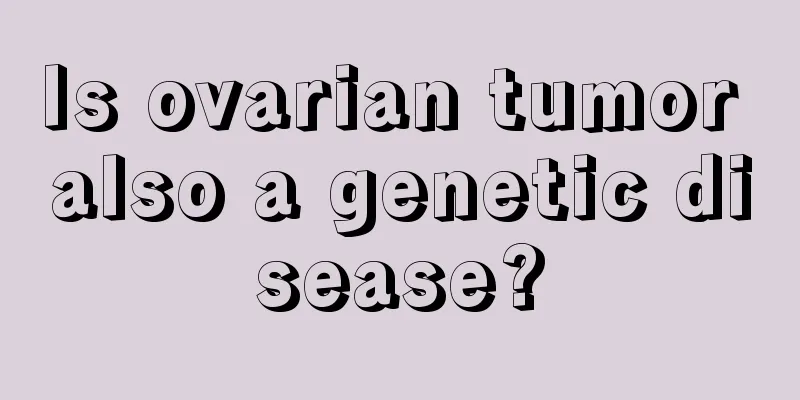Is ovarian tumor also a genetic disease?

|
Abnormalities in chromosome number and structure in ovarian tumors are of reference value in assessing prognosis. The survival rate of the normal karyotype group is higher than that of the abnormal karyotype group, and the survival rate of the complex abnormal karyotype group is significantly lower than that of the normal karyotype group and the simple abnormal karyotype group. So is ovarian tumor also a genetic disease? 1. Abnormal chromosome number: The chromosome changes in benign ovarian tumors are not significant, the most common being trisomy 12. The changes in the number of chromosomes in malignant ovarian tumors can be divided into two categories, namely, near diploid and highly aneuploid, among which near diploid tumors have a better prognosis. 2. Chromosome structural abnormalities The changes in chromosome structure of malignant ovarian tumors are relatively complex, mainly concentrated on chromosomes 1, 2, 3, 6, 7, 9, 11, 14, and 17. Among them, the abnormalities of chromosomes 1, 3, and 6 are quite common, mainly deletions and rearrangements, and the breakpoints are located at 1p34, lp36, 3p14-21, and 6q15-21. Other common rearrangements occur in 7p, 10q, llp, 14q, and 19q. There are not many abnormalities in chromosomes 2, 4, and 5. Chromosome 10 trisomy in Eo borderline cystadenocarcinoma may be a specific change in the early stage of chromosomes. 3. Marker chromosomes Studies on tumor-specific marker chromosomes have found that the breakpoints seen in chromosome rearrangements are highly consistent with the locations of rare and common fragile sites, and are characterized by non-random chromosomal abnormalities. Many of the genes at these frequent breakpoints are cellular oncogenes that play an important role in tumor formation. The more important marker chromosomes for ovarian malignancies are isochromosomes i(1q), i(4p), i(5p), i(6p) and i(12p). Malnutrition can reduce the number of ovulations. In fact, ovulation is an important carcinogenic factor. Periodic ovulation repeatedly causes damage and stimulation to the ovarian mesothelium, and also lacks a persistent physiological recovery period. This can explain why the ovarian mesothelium has a tendency to malignant transformation compared to the peritoneum. Ovulation also produces defects and unevenness on the ovarian surface, which easily forms ovarian mesothelial closed cysts, allowing carcinogenic factors to accumulate and stay there for a long time and attach to the mesothelium. |
<<: Are ovarian tumors generally hereditary?
>>: Ovarian tumors are also hereditary
Recommend
How to exercise facial muscles
Patients with stiff facial muscles can exercise t...
What tests should be done for colorectal cancer
Nowadays, the incidence of colorectal cancer is e...
Causes and care methods for leg pain during menstruation
When girls experience leg pain during menstruatio...
How to check and treat nasopharyngeal carcinoma
What are the treatment and examination methods fo...
I took cough medicine and found out I was pregnant
Before a woman prepares to have a baby, she must ...
Can honey prevent colon cancer?
We know that for a disease, the most important th...
What are the uses and effects of massage cream
Because people often need to stay up late to work...
What are the dietary factors for gastric cancer?
The incidence and mortality of gastric cancer var...
Is it good to massage the skin? 3 methods show amazing effects
As we age, our skin becomes worse and wrinkles ap...
Which is better, eyebrow cream or eyebrow pencil
Nowadays, beauty-conscious girls not only use eye...
Will endometrial cancer kill people?
Endometrial cancer patients should not have a des...
What diseases can laryngoscope detect?
Now because of the discomfort in the throat, I go...
What psychological symptoms belong to bad psychology
Many people pay more attention to their physical ...
Is facial laser hair removal good?
People's general aesthetic concept is that gi...
Hands and feet are itchy but not red or swollen
Generally, itchy feet are caused by athlete's...









